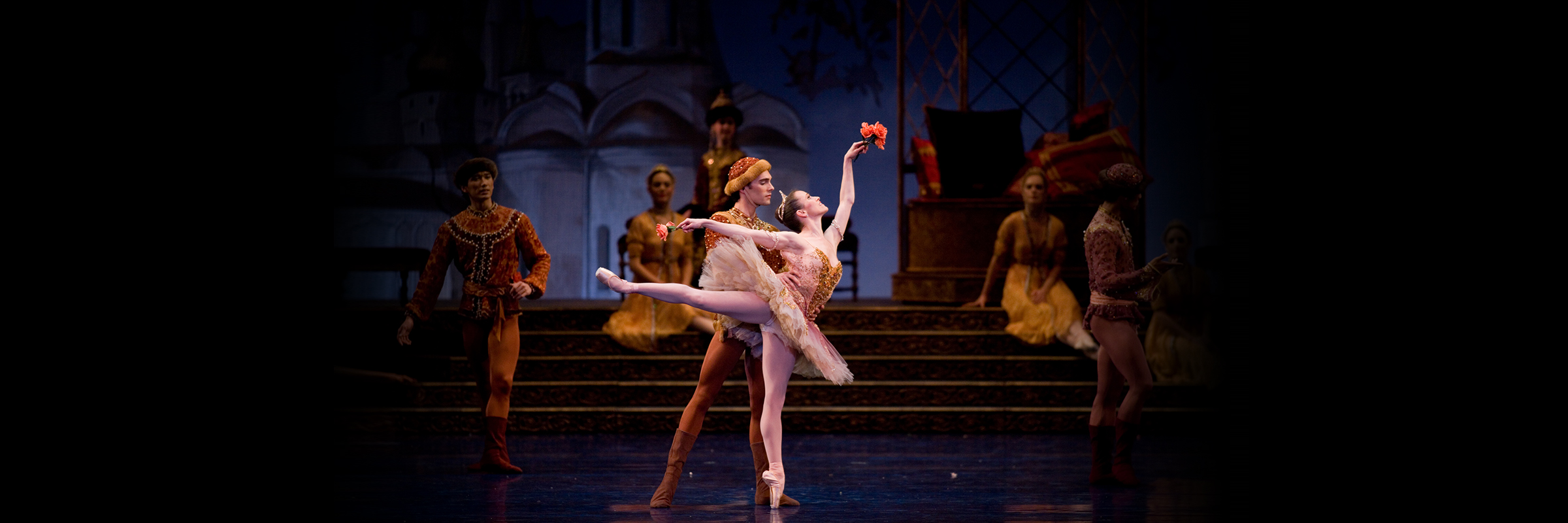Instant Expert: The Sleeping Beauty
What is the “Rose Adagio”?
The hops on pointe in Giselle, the 32 fouetté turns in Swan Lake—classical ballets are riddled with moments that give even the strongest ballerinas in the world nightmares. In The Sleeping Beauty that moment comes in Act I with the “Rose Adagio,” one of the most famous (and perilous) moments in classical ballet.
In the “Rose Adagio,” so named because each man hands her a rose, Aurora dances with four suitors to decide which she might want to marry. The choreography involves her performing the same steps with each gentleman, as if testing to see which one will be the best dance—and life—partner.
What’s so scary about the “Rose Adagio”? Mainly, a series of balances Aurora performs twice with each of the four suitors, first at the beginning of the dance and again at the end. These balances are deceptively hard: as she’s standing on pointe, a suitor turns her in a circle. Then she must let go of his hand, balance on one foot, and take the next suitor’s hand without ever coming off pointe. It’s a test of classical technique, but also a show of Aurora’s independence—ideally, it should look like she chooses to take each man’s hand, not like she has to do so.
A modified version of these balances reappears in the third act pas de deux, when Aurora and Prince Desiré dance at their wedding. But this time, instead of asserting her independence, the balance turns into a moment of courtly embrace, demonstrating that, finally, this man is her true love. Now that’s happily ever after.
Header image: Tina LeBlanc and Jaime Garcia Castilla in Tomasson’s The Sleeping Beauty // © Erik Tomasson








